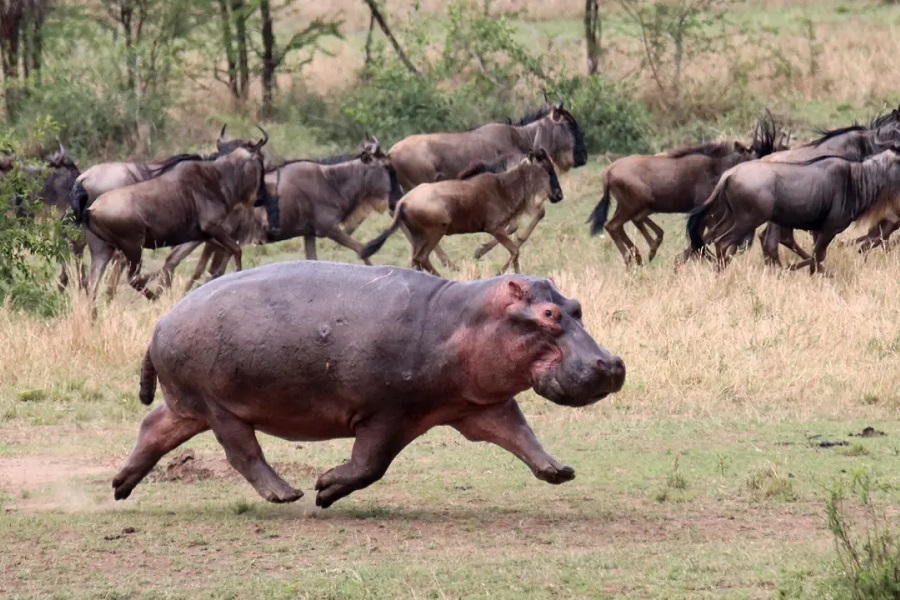11 Dec 2024

Tired Earth
By The Editorial Board

A pair of evolutionary biomechanics specialists at the University of London's, Royal Veterinary College, has found that when hippos run at full speed, all four of their feet are regularly in the air.
In their paper published in the journal Peer J, John Hutchinson, and Emily Pringle, describe how they filmed hippos running at full speed using high speed cameras and what they found when they analyzed the results.
The hippopotamus has earned a reputation as being one of the most dangerous animals in the world to humans. They are known to attack when provoked and to give chase when the need arises. They are also very large, with males averaging 1,500 kg and females 1,300 kg. For such a large animal, they also run surprisingly fast—some have been clocked at speeds up to 30 km/hr.
In this new study, Hutchinson and Pringle wondered how such a heavy creature could reach such speeds, noting that little research has been done on the hippo gait because they are so dangerous to be around.
To find out, they ventured to Flamingo Land resort in North Yorkshire and used high speed cameras to study their gait from a distance when the hippos were running. They managed to capture 169 running cycles on video from 32 individual hippos.
In analyzing the video, the research pair found that hippos only tended to run at high speed when being chased by another hippo, typically as a sign of dominance.
They also found that when they run at top speed, they lift all four of their feet off the ground at the same time at certain points in their gait—this happens 15% of the time while running. Each occurrence lasted for approximately 0.3 seconds. Further study showed that the hippos run using a trotting type gait rather than a gallop, which is the way rhinos run.
The research pair also found that the hippos run in similar ways when in the water—they are not able to swim from place to place, so they trot at high speed along the bottom.
Source : phys.org
Comment